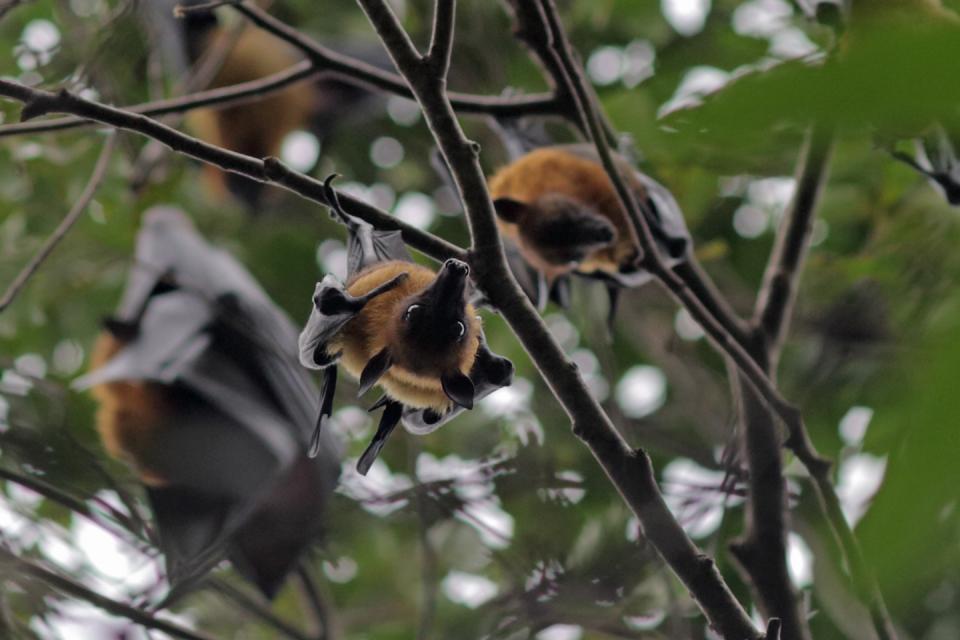
HIV first infected subsistence hunters in central Africa who may have seen infected primates as easy prey. The viruses behind SARS, MERS and, of course, the current coronavirus most likely jumped from bats through an intermediate host – civets, camels, and possibly pangolins – into people.
Indeed, as humans continue to move into previously wild lands and air travel continues to grow, we have seen an uptick in the rate of emergence of zoonotic viruses, or those that can jump between animals and humans.
Rather than waiting for the next virus to find its way into human hosts, Jonna Mazet, DVM, PhD, a professor of epidemiology and disease ecology at UCSF and UC Davis and director of the One Health Institute, is trying to catch them before they jump.
Mazet and the One Health team had identified coronaviruses as a significant pandemic threat. They had also flagged live-animal markets, like the one where the COVID-19 outbreak likely began, as a very likely setting for such spillover events.
“In a live-animal market, the animals are under a lot of stress and kept in tight quarters, tightly packed together, with multiple species mixing. It’s really dangerous,” Mazet said. “That’s where we saw SARS emerge, and that’s where we watch for much of our influenza recombination, as well.”
In a decade-long USAID-funded project called PREDICT, Mazet and a large collaborative team offered proof-of-concept evidence that risky viruses can be identified before they spill over into people. PREDICT identified areas where growing human populations were moving into areas of high biodiversity, causing stresses to the people, animals and ecosystems. The team was most interested in areas where residents experienced fevers of unknown origin, suggesting that novel viruses may already be cropping up. Working with local labs in areas that fell within USAID’s health portfolio, they sampled people and wildlife to see what viruses they had been exposed to.
Viruses considered high risk for causing a human outbreak are those that are distant relatives to those that make people sick and occur in a number of species – coronaviruses among them.
“It identifies itself as a jumper,” Mazet explained.
Overall, PREDICT identified more than 900 previously unknown viruses. Rural China was an area of interest from the start, as China’s long economic boom has pushed people into previously unpopulated landscapes, where they often bring wild animals into the food chain. Indeed, the project found serological evidence that people living at these wilderness frontiers were already being exposed to SARS-related coronaviruses.
This work, in collaboration with the Wuhan Institute of Virology, supported the diagnosis of SARS-CoV-2 in the first cases, before a specific test for the novel coronavirus was available.
“None of us wanted a pandemic to prove that this needed to be done,” Mazet said.
But as SARS and SARS-CoV-2 show, it’s tricky to identify in advance which viruses will pose the most problems. SARS was more contagious and caused more serious illness but was much more readily contained. That’s because those infected with SARS-CoV-2 are contagious for a larger stretch of their illness, including when they are asymptomatic.
Such pragmatic concerns are included in the algorithm that One Health is working on in an open-source fashion to identify the viruses that are most dangerous to humans. The researchers believe that we can identify the most dangerous viruses in advance.
Mazet hopes that PREDICT will help the work of early virus identification go – you guessed it – viral. The work was the pilot phase of an global-scale project launching now, called the Global Virome Project, which aims to catalog all the world’s viruses and identify the riskiest among them. The earlier work doubled as a collaborative training effort to enable national surveillance systems and other partner labs around the world continue the work indefinitely. More virus labs are encouraged to join the network.
The One Health team estimates that there are approximately half a million mammalian and waterfowl viruses that could infect humans left to be discovered, potentially multiplying the known viruses that can infect us by a factor of several thousand.
That may sound scary, but, by learning more about the most dangerous viruses before they explode in human populations, we could be prepared with workable tests, treatments and potentially even vaccines before the next outbreak. That would make future spillover viruses easier to contain.
In the meantime, the list of activities to curtail in order to dramatically reduce the risk of viruses spilling over into humans is a lot shorter than the list of lurking viruses. The trade in rare wildlife – beginning with often-illegal hunting and ending in live-animal markets and restaurants – tops the list. Farming bat guano – or feces, used as fertilizer – is also dangerous, because bats carry a wide array of viruses. And subsistence hunters like the likely first humans infected with HIV are increasingly avoiding the lethargic and recently dead animals that they might once have seen as a protein windfall.
Photo: Kathy West/One Health Institute